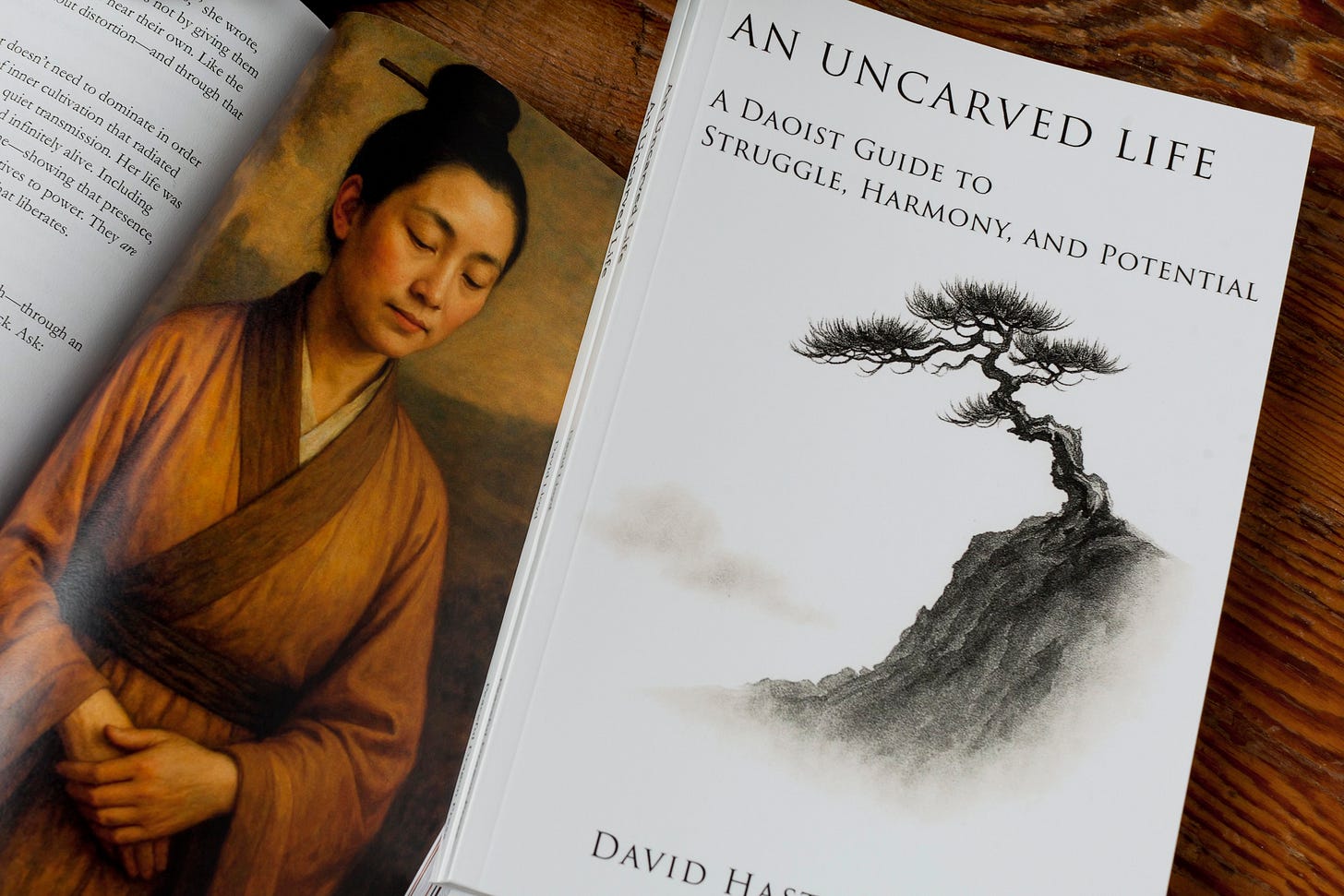Peer Reviewed Research: What Happens in the Brain During Meditation and Qigong?
A Look at Brainwave Coherence and Inner Synchrony
For thousands of years, people have practiced meditation and Qigong to calm the mind, strengthen the body, and cultivate inner peace. But what exactly happens inside the brain during these practices? Do the quiet stillness of meditation and the graceful movements of Qigong influence the brain in similar ways—or are they different paths to the same destination?
A fascinating study by Tadashi Kato and Kimiko Kawano, published in 2017 in the Journal of the International Society of Life Information Science, sought to answer that question. The researchers used brainwave measurements (EEG, or electroencephalography) to explore how the brain’s hemispheres and regions communicate with each other during yoga-based meditation and Qigong exercise. Their findings reveal that while both practices increase inner brain connectivity, they do so in distinct ways—offering unique insights into the mind–body relationship.
Understanding Brain Coherence: The Brain’s Inner Conversation
Before diving into the results, it helps to understand a key term in this research: EEG coherence.
When we record brainwaves, we see rhythmic electrical activity coming from different parts of the brain—like musical instruments playing in an orchestra. “Coherence” measures how well these different parts play together. High coherence means the brain regions are in sync, communicating efficiently and rhythmically; low coherence suggests more independence or even disconnection between them.
Previous studies had already shown that meditation often increases alpha and theta brainwaves—those associated with relaxation, focus, and creative insight. But coherence goes a step further: it reflects how integrated the whole brain becomes. A highly coherent brain is like a well-coordinated team—calm, alert, and harmonized from front to back, left to right.
Why Compare Yoga Meditation and Qigong?
Meditation and Qigong are both ancient mind-body disciplines, but they differ in how they’re practiced.
Transcendental Meditation (TM), the form of yoga meditation studied here, involves silently repeating a sound or mantra with eyes closed, letting thoughts settle into quiet awareness. It is generally done seated and still.
Qigong, on the other hand, combines slow, flowing movements with coordinated breathing and focused imagery. It’s rooted in Chinese medical and Daoist traditions and can be performed standing, sitting, or even lying down.
Both practices are known for reducing stress and improving well-being, but only a few studies had directly compared them under the same experimental conditions. Kato and Kawano wanted to see whether these two paths to calmness shaped the brain’s internal rhythm differently.
How the Study Was Conducted
The researchers recruited 24 healthy adults, divided into three groups of eight:
TM group: Experienced practitioners of Transcendental Meditation with more than three years of practice.
Qigong group: Veteran Qigong instructors with over ten years of teaching experience.
Control group: University students with no experience in meditation or Qigong.
Each participant completed three stages in a quiet, temperature-controlled lab:
Pre-rest: 10 minutes of simple relaxation before practice.
Practice: 20 minutes of TM, Qigong, or listening to relaxing classical music (for the control group).
Post-rest: 10 minutes of quiet rest after the session.
During all stages, EEG signals were recorded from 16 sites on the scalp, following the standard 10-20 system used in neuroscience research. The scientists focused on two key pairs of electrodes:
C3–C4: measuring communication between the left and right hemispheres.
Fz–Pz: measuring communication between the front (frontal lobe) and back (parietal–occipital region) of the brain.
They analyzed coherence in several brainwave ranges—theta (4–8 Hz), alpha-1 (8–10 Hz), alpha-2 (10–13 Hz), and beta (13–30 Hz)—to capture both calm and alert states.
What They Found: The Brain in Harmony
1. Meditation boosts coherence during and after the session
For those practicing Transcendental Meditation, brain coherence increased significantly during meditation and remained elevated afterward. The strongest effects appeared in the alpha bands, particularly between the two hemispheres (C3–C4) and between the front and back of the brain (Fz–Pz).
In simple terms, the brain became more synchronized, as if both hemispheres and major regions started “singing” in tune. This pattern suggests a state of integrated awareness—calm yet alert.
The authors describe it this way:
“TM produced increased hemispheric as well as frontal-occipital coherences during and after the meditation.”
This finding aligns with earlier research showing that alpha coherence in meditation reflects a deep, restful state of wakefulness—sometimes called “relaxed alertness.”
2. Qigong’s effects emerge after the practice
The Qigong group showed a different pattern. Their brain coherence did not increase during the exercise itself. In fact, one coherence value (alpha-1 between hemispheres) temporarily dropped during movement. But interestingly, once the exercise ended, coherence rose sharply—matching or even exceeding some of the TM results.
As the authors write:
“Qigong produced increased hemispheric as well as frontal-occipital coherences only after the exercise.”
This delayed effect may reflect how Qigong integrates movement, breath, and attention. While the body is in motion, sensory and motor regions may dominate, leading to transient asymmetry. But once movement stops and energy settles, the nervous system may shift into a deeply integrated and coherent resting state.
3. Music alone didn’t change coherence
The control group, who simply listened to calming Beethoven music, showed no significant changes in coherence during or after the session. This suggests that the effects seen in TM and Qigong were not just due to relaxation or pleasant sensory experience—they reflected specific neurophysiological processes tied to those disciplines.
Interpreting the Results: Different Paths, Similar Destinations
The study paints an intriguing picture: meditation and Qigong both promote brain integration, but they do so through different physiological routes.
Meditation: Inner Stillness, Continuous Integration
In Transcendental Meditation, the stillness of the body and the inward focus of attention allow brain regions to harmonize in real time. The practice involves minimal sensory input and no movement, which may favor the rise of alpha waves generated between the thalamus and cortex—regions involved in regulating attention and consciousness. The researchers suggest that TM “amplified the inner-brain vibration associated with the alpha wave,” creating a state of balanced calm and alertness.
Qigong: Movement Toward Coherence
Qigong, in contrast, is active and rhythmic. The eyes are open, attention alternates between breath and motion, and one side of the body may move more than the other. These factors can temporarily reduce symmetry between the hemispheres. Yet, once practice concludes and the body becomes still, coherence rises—perhaps reflecting the integration of sensory, motor, and cognitive networks that have been coordinated through slow, mindful movement. In other words, the harmony builds through movement and expresses itself in rest.
The Takeaway
Both practices seem to train the brain toward functional synchronicity—a state where different parts of the nervous system work together smoothly. This may explain why practitioners often report feeling both relaxed and alert after a good session: the brain is calm, but also organized and clear.
Why Coherence Matters: From Meditation to Medicine
EEG coherence isn’t just an academic measure—it reflects something meaningful about mental health and cognitive performance.
Higher coherence has been linked in other studies to better attention, creativity, emotional stability, and problem-solving ability. When the brain’s communication networks operate in sync, people tend to think more clearly and feel more centered.
This opens up exciting possibilities for clinical applications. As Kato and Kawano suggest, if specific techniques can enhance EEG coherence, they could be used to train relaxation and focus in athletes, professionals, and people dealing with stress or anxiety. In time, EEG-based feedback systems might even guide meditation learners toward the same harmonious brain patterns observed in experienced practitioners.
The Broader Implication: Unity in Diversity
In essence, this study reveals that stillness and movement can both lead to coherence.
Meditation cultivates harmony through inward quietude; Qigong does so through rhythmic flow. The paths may differ, but the destination—a more integrated, balanced nervous system—is shared.
From a traditional perspective, one might say that both practices balance Qi, the vital energy that animates life. From a neuroscientific viewpoint, they enhance functional connectivity—the neural counterpart of Qi’s harmonious flow. Each language describes the same reality from its own angle.
The results also suggest that cultivating coherence is not limited to spiritual practice. It may be the neurological signature of any state that unites mind and body—whether through art, music, sport, or even mindful breathing. Coherence, in this sense, might be the universal rhythm of well-being.
Conclusion
Tadashi Kato and Kimiko Kawano’s study provides scientific evidence for what practitioners of both yoga and Qigong have long felt: these disciplines bring the mind and body into harmony.
Transcendental Meditation creates immediate and sustained brain coherence, while Qigong gradually leads to coherence after practice. Both reduce internal noise, linking distant parts of the brain into a unified field of awareness.
As science continues to map the electrical language of the mind, such research reminds us that true balance is not merely stillness or motion—it is the synchrony between them.
Reference
Kato, T., & Kawano, K. (2017). Physiological investigation on EEG coherency during yoga meditation and Qigong exercise. Journal of the International Society of Life Information Science, 35(2), 99–109.
Like what you read? Keep exploring…
If this post resonated with you, you’ll love my book:
An Uncarved Life: A Daoist Guide to Struggle, Harmony, and Potential
This book blends timeless Daoist wisdom with real-world insight into how we can navigate struggle, cultivate inner peace, and live in alignment with our deeper potential. Drawing from classical texts like the Dao De Jing and integrating modern psychology and neuroscience, An Uncarved Life offers a grounded, poetic, and deeply personal guide to living well in a chaotic world.
Whether you’re seeking clarity, calm, or a more meaningful path forward, this book is a companion for anyone who wants to walk the Way with sincerity and strength.
Available now in print, Kindle, and audiobook formats.
Click here to get your copy on Amazon



